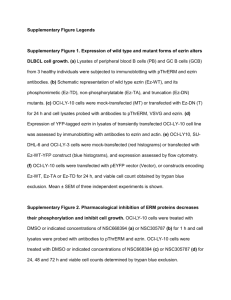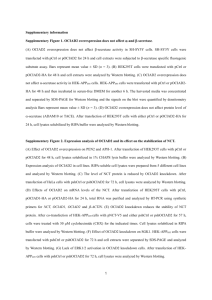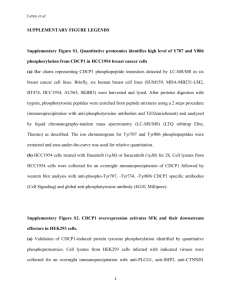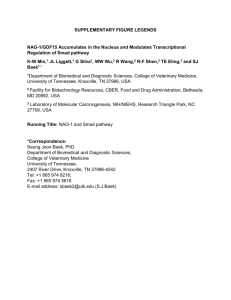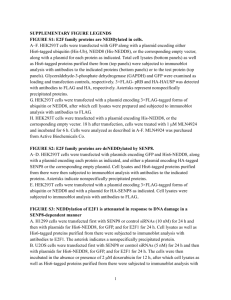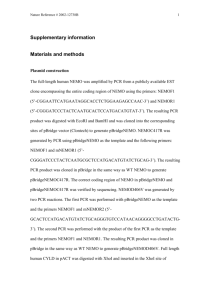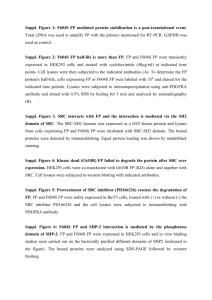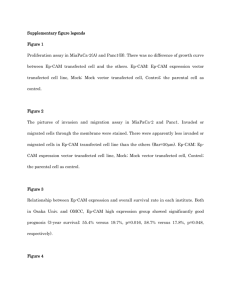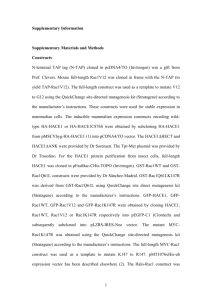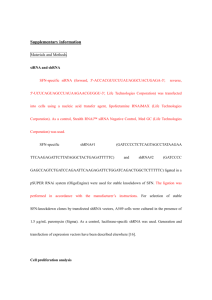Supplementary Figure Legends (docx 31K)
advertisement
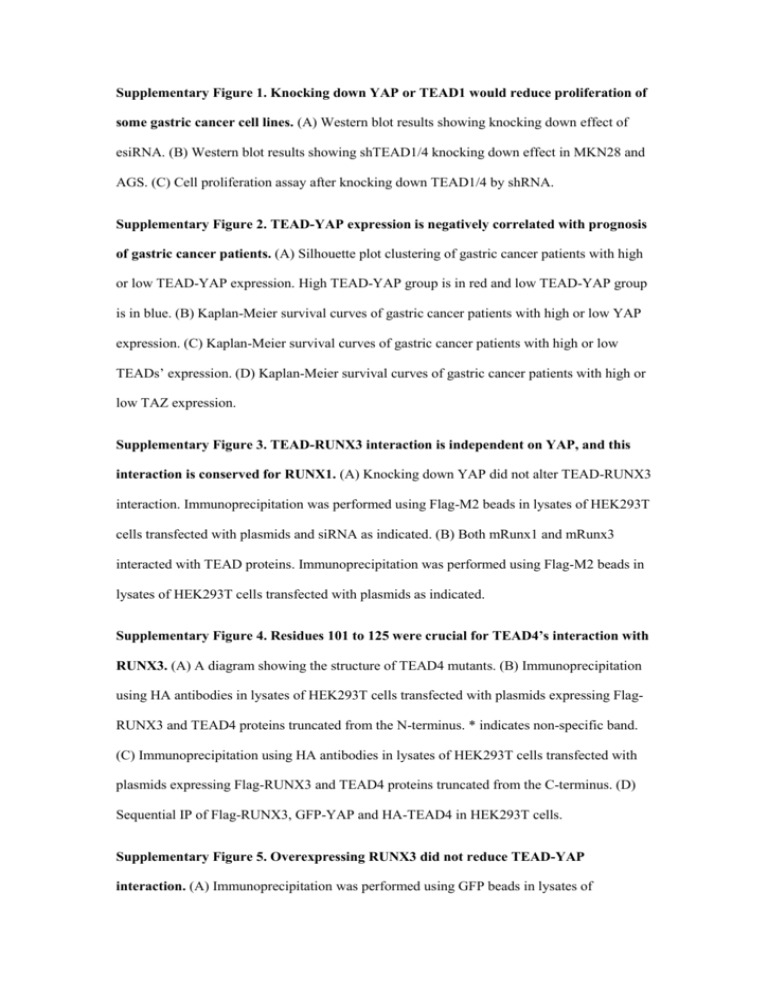
Supplementary Figure 1. Knocking down YAP or TEAD1 would reduce proliferation of some gastric cancer cell lines. (A) Western blot results showing knocking down effect of esiRNA. (B) Western blot results showing shTEAD1/4 knocking down effect in MKN28 and AGS. (C) Cell proliferation assay after knocking down TEAD1/4 by shRNA. Supplementary Figure 2. TEAD-YAP expression is negatively correlated with prognosis of gastric cancer patients. (A) Silhouette plot clustering of gastric cancer patients with high or low TEAD-YAP expression. High TEAD-YAP group is in red and low TEAD-YAP group is in blue. (B) Kaplan-Meier survival curves of gastric cancer patients with high or low YAP expression. (C) Kaplan-Meier survival curves of gastric cancer patients with high or low TEADs’ expression. (D) Kaplan-Meier survival curves of gastric cancer patients with high or low TAZ expression. Supplementary Figure 3. TEAD-RUNX3 interaction is independent on YAP, and this interaction is conserved for RUNX1. (A) Knocking down YAP did not alter TEAD-RUNX3 interaction. Immunoprecipitation was performed using Flag-M2 beads in lysates of HEK293T cells transfected with plasmids and siRNA as indicated. (B) Both mRunx1 and mRunx3 interacted with TEAD proteins. Immunoprecipitation was performed using Flag-M2 beads in lysates of HEK293T cells transfected with plasmids as indicated. Supplementary Figure 4. Residues 101 to 125 were crucial for TEAD4’s interaction with RUNX3. (A) A diagram showing the structure of TEAD4 mutants. (B) Immunoprecipitation using HA antibodies in lysates of HEK293T cells transfected with plasmids expressing FlagRUNX3 and TEAD4 proteins truncated from the N-terminus. * indicates non-specific band. (C) Immunoprecipitation using HA antibodies in lysates of HEK293T cells transfected with plasmids expressing Flag-RUNX3 and TEAD4 proteins truncated from the C-terminus. (D) Sequential IP of Flag-RUNX3, GFP-YAP and HA-TEAD4 in HEK293T cells. Supplementary Figure 5. Overexpressing RUNX3 did not reduce TEAD-YAP interaction. (A) Immunoprecipitation was performed using GFP beads in lysates of HEK293T cells transfected with plasmids as indicated. * indicates non-specific band. (B) Bands were quantified using imageJ. The ratio of TEAD4/YAP was calculated. Supplementary Figure 6. L121H mutation of RUNX3 abolished TEAD-RUNX3 interaction without altering other function of RUNX3. (A) qPCR result measuring CTGF expression level in HEK293T cells transfected with RUNX3 mutants. (B) RUNX3 and CBFβ interaction was measured by immunoprecipitation. (C) RUNX3’s activating effect on P14 promoter was studied by dual lucifease assay. HEK293T cells were transfected with p14 reporter plasimed, Flag-RUNX3 or mutant plasmid and PRL plasmid. Cell lysates were prepared after 24 hours. Luciferase activity was measured using Dual-Luciferase® Reporter Assay System (Promega). (D) RUNX3’s activating effect on IgCα promoter was studied by dual lucifease assay. HEK293T cells were transfected with IgCα reporter plasimed, TGFβR1 plasmid, Flag-RUNX3 or mutant plasmid and PRL plasmid. Cell lysates were prepared after 24 hours. Luciferase activity was measured using Dual-Luciferase® Reporter Assay System. Supplementary Figure 7. RUNX3 reduced TEAD-DNA interaction and suppress the oncogenic activity of TEAD-YAP complex. (A) Western blot result of cell lysates used in Figure 4B. (B) Western blot result of cell lysates used in Figure 5C. (C) Western blot result of cell lysates used in Figure 5D. (D) Quantification of MKN28 colony numbers in Figure 6A. (E) Quantification of AGS colony numbers in Figure 6A. (F) Average tumour weights in Figure 6B. (G) Western blot result of cell lysates used in Figure 6E. (H) Average tumour weights in Figure 6B. (G) Western blot result of cell lysates used in Figure 6F. Supplementary Figure 8. RUNX3 negatively regulates TEAD-YAP target genes in gastric epithelial cells. qPCR validation for some candidate TEAD-YAP target genes in Figure 5B.
